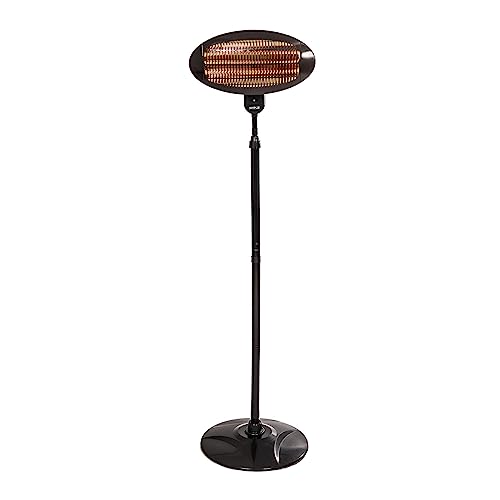How to Choose a Patio Heat Lamp Electric
You have many options when it comes to heating up your patio. In contrast to propane models that require refills electric heaters can provide instant heat by simply flicking the switch or pressing a button.
These units don't emit any gasses that could cause a health hazard. Some units are equipped with adjustable heating settings to accommodate varying distances.
Heater Type
With the appropriate patio heater, you can relax in your outdoor living spaces into the night and throughout the seasons. Patio heaters come in many different styles that include freestanding propane or natural gas models and ceiling or wall mounted electric radiant heaters. Your choice depends on the dimensions of your space, existing power sources and personal preference.

Most patio heaters are powered by electricity or liquid or natural gas and emit heat in convection as well as radiant heating. Their output of heat is measured in watts and then converted to British thermal units (BTUs) to compare. Some models have adjustable temperatures to allow more flexibility.
Patio heat lamps combine an electric burner on a pole and an open-pored screen that reflects the flames and radiates heat downwards to warm people, objects and furniture. Some have a reflector above the burner, which can be silvered to cut down the amount of heat lost upwards.
The most common type of patio heater that is a gas patio heater is usually found in outdoor seating areas of bars and restaurants since they generate a lot of heat quickly and spread it evenly across all directions, making them ideal for warming tables. These heaters are portable and run on propane tanks or plumbed in to your natural gas line. The latter is more convenient and comes with lower upfront costs, however it requires fuel.
A growing number of homes are equipped with natural gas lines, making these the ideal solution for those who prefer a gas-powered patio heater. These heaters are easy to install, but they require a gas line that is properly installed and working to be secure. There are portable natural gas heaters equipped with extension hoses that assist in overcoming this limitation however they can also create a tripping hazard and an additional fire danger when not in use.
Safety
Electric patio heaters are safe to use in covered areas, as they allow heat to radiate upwards and not outwards. However, they're not meant to be used on an open roof; the heater must be installed at least 18" from the walls adjacent to it or 6" from the ceiling to avoid fire hazards.
Patio heaters made of propane and gas are generally only suitable for use in enclosed areas and are protected by a durable cover that is designed for open-air use. These covers are usually made of fire-resistant fabrics and have an open roof that can be closed. The safety issues with these kinds of outdoor patio heaters are related to the flame and fumes they produce. They should be located away from flammable objects like chairs and curtains.
Follow the guidelines and safety measures of the manufacturer before installing a patio heater or heat lamp. Choose just click the next webpage that has received UL and CSA safety certifications and be sure to go through the owner's instructions thoroughly. Be extra cautious when it comes to pets and children, and make sure the heater is not near them when it's operating. Some free-standing patio heaters like EUROM have a built-in tipping safeguard that automatically shuts off the heater if it is tipped over.
If outdoor electric heater for patio is connected to a natural-gas line, it is recommended to check its condition periodically and test it by a certified professional for leaks. If the line needs to be replaced then you should hire an experienced plumbing professional who is licensed. A professional will be in a position to determine if the line should be connected to an underground pipe or not. A professional can make sure the heater for your patio is connected into an outlet that's GFCI (ground fault circuit interrupter) certified to guard against electrical fires and shocks.
Installation
The height of the patio heater will determine the amount of heat it emits into the room. It is essential to place the heater at an appropriate distance from any surfaces such as plastic, which can deform and wood, which can become too hot. Depending on the heater model, you can choose to mount it on a wall or a structure using standard mounting brackets. Some models have a soft start feature, which reduces peak current in order to protect your circuits.
